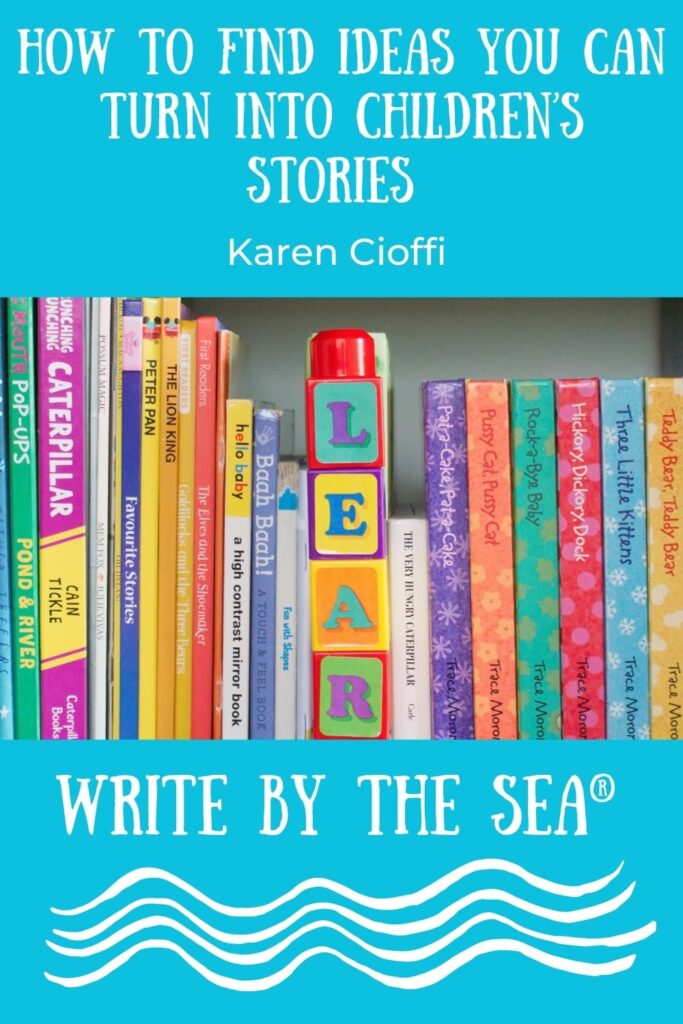by Karen Cioffi

Sitting at the computer with a blank word document in front of you may be intimidating for a writer.
You just finished one manuscript and need to start on another, or you’ve hired out to ghostwrite a story.
Whatever the reason is, you need to begin writing a children’s story – you need writing ideas.
Hmmm.
What should the story be about?
You think and think.
You gaze out the window.
ou notice a squirrel running along the branches of the tree outside the window.
You draw a blank.
Alexander Steele once wrote a short article, “Where Can You Find the Seeds of a Good Story?”, for an issue of The Writer magazine.
It was interesting to read that Herman Melville, author of Moby-Dick, had his own whaling adventures, which he used to create a wonderful, everlasting story.
Steele advised, “Probably the most fertile place to look for ideas is right inside the backyard of your own life.”
You might be thinking that you don’t have close contact with children, so you don’t have any experiences to draw on; no foundation for children’s writing ideas.
Or, you may be so busy living your life and raising your children that you don’t have time to stop and see all the amazing story opportunities that are right in your own backyard.
Well, even if these scenarios fit, you can take steps to rectify the situation.
Writing Ideas: Finding Story Fodder if You Don’t Have Close Contact with Children
1. Turn on the TV.
Yes, this is an excellent source for writing ideas, as well as watching children’s behavior.
While it may be in the confines of a scripted show, the writers of these shows try to keep it as real as possible.
Take note of the situations, the attitudes of the characters, the scenes, and everything else.
Even children’s cartoons have engaging storylines.
They may be just the spark you need.
2. Go to a playground with notebook in hand.
Watch the children play and listen to them talk.
If you’re a professional writer or ghostwriter, or you’re already published, consider asking your local ‘age appropriate’ school if you could sit in the lunchroom during lunch periods.
One way to get a positive answer might be to first ask if you could give an author or writing presentation to the students.
The principal would need to be sure you are a legitimate writer.
Please note though, there may be legal and safety aspects a school would need to consider.
Note: If you do go to a playground or other area where there are children, be sure to inform parents/guardians of what you’re doing. It’d be a good idea to bring a copy of one of your published books with you, so they feel comfortable that you are indeed a writer. It’s a crazy world, always take precautions, and keep the safety of our children at the forefront.
3. Read newly published children’s books, and reread ones you enjoyed as a child, then reinvent a story.
This is a tip I took advantage of with my own children’s middle-grade fantasy, Walking Through Walls.
I read an outline of an old Chinese tale and reinvented it for a children’s book.
I was reminded of this ‘writing ideas’ source by multi-published children’s writer Margot Finke.
During a teleclass she presented, she advised, “study books you like; pay attention to why they work, then “craft an entirely new story.” She explained that, “quirky and fresh” wins publishing contracts today.
Writing Ideas: Finding Story Ideas if You Do Have Close Contact with Children
1. Study the children you do have contact with, whether your own children, your grandchildren, or other relatives.
Children are an amazing source of inspiration and ideas.
They have an innate ability to make you feel: just looking at a picture of children may make you smile; hearing a baby laugh can actually make you laugh.
Watch the children, notice their mannerisms, body language, movements, attitudes and emotions, speech, and their interactions with other children and adults.
You’ll not only get writing ideas for children’s story, you’ll also get dialogue and ‘showing’ descriptions.
2. If you have regular contact with children, you really shouldn’t need any other steps, but if the characters’ ages of your new story differ from the ages of the children you see, use the steps noted above.
Finding ‘writing ideas’ for children’s stories is rather easy once you tune in to what you’re looking for and where you can find it.
About Karen Cioffi
 Karen Cioffi is an award-winning children’s author and children’s ghostwriter, rewriter, and coach with clients worldwide. She is also the founder and editor-in-chief of Writers on the Move, and an author online platform instructor with WOW! Women on Writing.
Karen Cioffi is an award-winning children’s author and children’s ghostwriter, rewriter, and coach with clients worldwide. She is also the founder and editor-in-chief of Writers on the Move, and an author online platform instructor with WOW! Women on Writing.
Karen’s children’s books include Walking Through Walls and The Case of the Stranded Bear. She also has a DIY book, How to Write Children’s Fiction Books. You can check them out at: Karen Cioffi.




These are really effective. Thanks for sharing this!
Hi, Marlene,
I’m glad you found them useful!
Great ideas, Karen. Thanks for sharing.
Marlene Hibbard